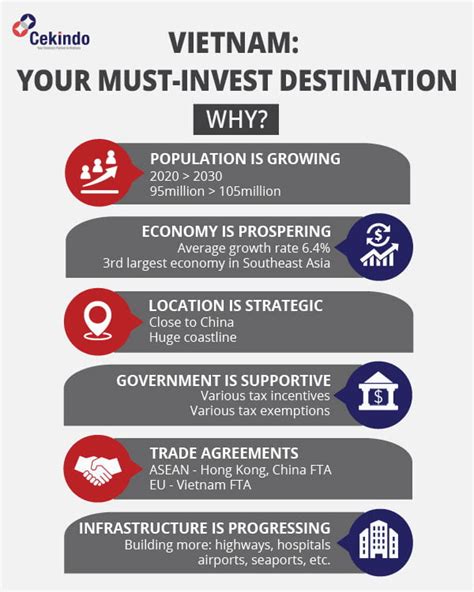
Strategic Location and Infrastructure Development
Vietnam has emerged as a compelling destination for investors, driven by its robust economic growth, strategic location, and proactive government policies. As of 2025, several key factors contribute to the country’s investment appeal.
Situated in Southeast Asia, Vietnam offers strategic access to major global markets. The ongoing construction of Long Thanh International Airport, expected to be operational by the first half of 2026, will significantly enhance connectivity and bolster trade and tourism (source). Additionally, the development of the North–South Expressway East is set to improve domestic logistics, facilitating smoother movement of goods and services across the country (source).
Growing High-Tech Manufacturing Sector
Vietnam is positioning itself as a hub for high-tech manufacturing. The government is actively attracting investments in semiconductor manufacturing, artificial intelligence, and green energy. Major corporations like Samsung and Foxconn have established significant operations in Vietnam, and the country aims to attract $40 billion or more in registered foreign direct investment annually over the next five years, focusing on high-tech sectors (source).
Expansion in Chip Packaging and Testing
The semiconductor industry in Vietnam is experiencing notable growth. Companies such as Hana Micron and Amkor Technology are investing heavily in chip packaging and testing facilities. Intel also operates its largest back-end chip factory in the country. These developments are positioning Vietnam as a key player in the global semiconductor supply chain (source).
Renewable Energy Initiatives
Vietnam is making significant strides in renewable energy, particularly in wind power. By July 2022, the country’s installed wind power capacity had risen to at least 4,000 MW, reflecting a strong commitment to sustainable energy sources (source). This focus on renewable energy presents ample opportunities for investments in green technologies and infrastructure.
Diversification of Global Supply Chains
In light of global trade tensions and the “Anything But China” strategy adopted by some Western companies, Vietnam has become an attractive alternative for manufacturing and supply chain diversification. Its favorable trade agreements and improving business environment make it a viable option for companies seeking to relocate or expand operations in Asia (source).
Government Support and Policies
The Vietnamese government continues to implement policies favorable to foreign investment, including tax incentives, land lease deals, and the development of investment support funds. Efforts are also underway to upgrade the labor force through partnerships with universities and multinational companies, ensuring a steady supply of skilled workers to meet the demands of high-tech industries (source).
Vietnam’s strategic initiatives, coupled with its dynamic economic environment, make it a promising destination for investors looking to capitalize on growth opportunities in Southeast Asia. With a thriving manufacturing sector, government incentives, and a growing focus on green energy, Vietnam is poised to become one of the most attractive investment destinations in the region.
